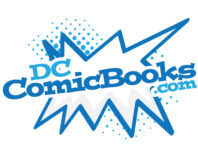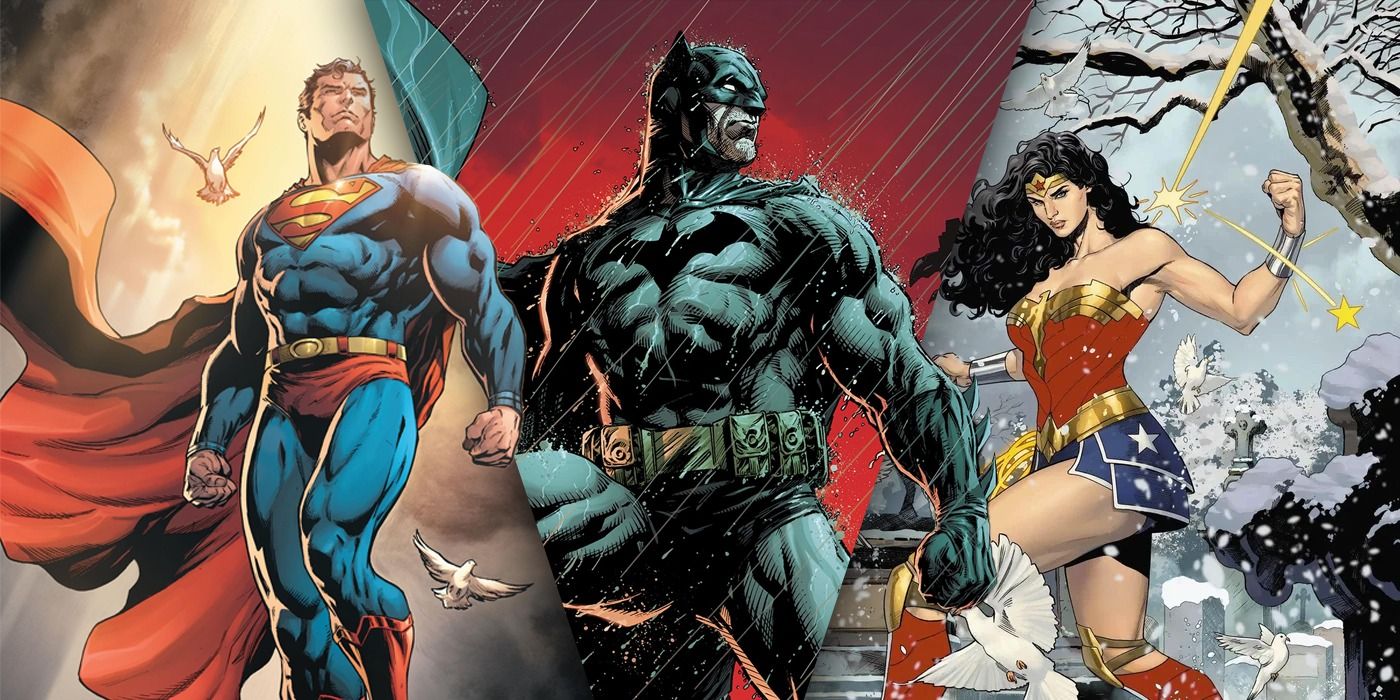[[{“value”:”
The Justice League is made up of some of the world’s greatest superheroes, rarely failing in their quest to protect the people of Earth from the forces of evil. Throughout its history, the Justice League has featured some of the most popular—and most obscure—heroes in DC Comics. Nearly every era of DC’s publishing has had its own version of the League, and each team reflects the history of the moment.
Which heroes were blocked from joining the team by the editorial office? When and why did the Martian Manhunter stop being a regular member of the League? These questions, and others, will be answered in this ranking of the best Justice League lineups of all time.
7
The Silver Age/Satellite Era Justice League
Primary members: Superman, Batman, Wonder Woman, The Flash (Barry Allen), Green Lantern Hal Jordan, the Martian Manhunter and Aquaman
The best place to start any story is at the beginning. The very first lineup of the Justice League was made up of the all-stars of the day, including newer additions to DC lore like Barry Allen, Hal Jordan, and the Martian Manhunter, while embracing a scientific and cosmopolitan view of the world. People generally don’t think of comic books as changing or evolving, but the medium was vastly different in the early ’60s compared to today’s landscape. Character development or story arcs weren’t the main focus of a comic book; instead, the goal was to make each monthly installment engaging enough for readers to return for the next issue.
Related
10 Forgotten Justice League Comics That Changed Everything
Because the Justice League’s history in the DC Universe is so long, fans have forgotten some of the biggest moments from iconic comics over the years.
As such, the original exploits of the Justice League are far less metaphorical and mythological than one might expect today. Instead of universes colliding or sentient superweapons firing backward through time, the original Justice League of America faced challenges rooted in scientific progress. In a world that had been rapidly changed by the atomic bomb, the JLA served as trusted custodians and educators of scientific knowledge. They often defeated their foes through the use of chemistry, radiation, or the untold wonders of space. As the League’s membership expanded and evolved, so too did the scope of their adventures.
6
Scott Snyder’s Justice League
Primary members: Superman, Batman, Wonder Woman, The Flash (Barry Allen), Green Lantern John Stewart, Aquaman, Cyborg, the Martian Manhunter, Hawkgirl (Kendra Saunders)
A good team isn’t all that’s necessary to create an iconic gathering; how these characters interact with each other is paramount in developing well-rounded personalities. Some team books may feature epic tales of heroism, but the lead characters hardly exchange words. Likewise, some ensemble books may have rich characterization, but the plot moves at a snail’s pace. With that in mind, the lineup for the 2018 Justice League volume, written by Scott Snyder, serves as a good transition between the New 52 era and the DCAU version of the team, which heavily inspired this comic. Bringing Martian Manhunter, John Stewart, and Hawkgirl back to the team helped the series feel familiar to past versions of the League.
However, something is missing from these pages. While the series delivers the comic book bombast Snyder is known for, his Justice League era works better in concept than in practice. The series itself was strong, but the character work feels lacking. Barry Allen and John Stewart don’t have a dynamic that highlights the Flash and Green Lantern’s unique relationship. And while Martian Manhunter’s presence is appreciated, the focus on him often pushes other characters out of the spotlight.
5
The Arrowverse Justice League
Primary members: The Flash (Barry Allen), Supergirl, Superman, Black Lightning, Martian Manhunter, Batwoman (Kate Kane) and Sara Lance
With the finale of Superman & Lois and the end of DC’s presence on the CW network, a lot of retrospective attention is being given to the Arrowverse as a whole. Lasting over a decade, the Arrowverse was once the only place where comic fans could see serialized live-action stories featuring some of their favorite characters. Spanning several years and no fewer than six TV shows, DC’s presence in the televised landscape was undeniable, making it inevitable that the world’s greatest superheroes would eventually unite.
Related
15 Times the Arrowverse Fumbled Great DC Storylines
The Arrowverse failed to pull off some major DC storylines, team-ups and concepts that didn’t come to fruition properly.
What truly holds this team back from greatness are the legal conundrums that prevent the use of certain characters well known for their League membership, even stopping the team from being referred to as the Justice League on screen. Despite including three of the seven founding members and functional stand-ins for three others, the Arrowverse team could never formally be recognized as the Justice League. They were also absent after the Crisis on Infinite Earths conclusion in 2019, leaving this one moment as a tantalizing tease of what could have been. Though never called by name, the Justice League existed in the Arrowverse in spirit.
4
The Justice League Post-One Year Later
Primary members: Superman, Batman, Wonder Woman, Green Lantern Hal Jordan, Black Canary, Red Arrow, Vixen, Black Lightning and Red Tornado
This particular lineup of the Justice League is caught in an awkward position, falling between Grant Morrison’s reinvention of the JLA in the late ’90s—which inspired the tone and membership of the DC Animated Universe—and the New 52, which served as the definitive modernization of the League. Coming hot off the heels of 2006’s Infinite Crisis, which brought many pre-Crisis elements back into DC mythology, the 2007 Justice League of America series aimed to return the team and the wider DC Universe to the basics. Heroes like Superman, Batman, and Wonder Woman returned to the League, joined by others like Vixen, Red Tornado, and Geo-Force, while Roy Harper finally stepped up as Red Arrow.
As with more comic books than people would believe, the true failing of this era of the League wasn’t in its writing or characterization but in editorial mandates and interference. Initially written by Brad Meltzer and later handed to the late great Dwayne McDuffie—one of the major creative voices behind the DCAU—the most generous way to describe this series is that it was compromised to death. Characters slated to die couldn’t be used in the book, and stories that hadn’t even been published yet influenced how Justice League stories could be told. It’s an undesirable situation for any writer, especially when working on one of the flagship titles, ultimately robbing the book of its potential.
3
Justice League In the DCAU
Primary members: Superman, Batman, Wonder Woman, The Flash (Wally West), Green Lantern John Stewart, Martian Manhunter and Hawkgirl (Shayera Hol)
For at least two generations, this iteration of the Justice League and the larger world they inhabit represents the definitive version of DC Universe mythology. Beginning with animated shows focused on Batman and Superman, Bruce Timm, Rich Fogel, and Dan Riba cemented their legacies with the dual achievements of Justice League and Justice League Unlimited. Smart and sophisticated story arcs, well-developed and engaging characters, and a voice cast that is nothing short of iconic are just a few of the many accomplishments of the DC Animated Universe. These achievements help explain why the universe remains beloved nearly 20 years after its initial conclusion.
Any good team is made up of great characters, and the DCAU’s Justice League is no exception. Featuring the most popular and iconic heroes associated with the League, this version’s only real flaw is that some characters were given standout moments at the expense of others. While heroes like Batman, Superman, and Hawkgirl, who replaced Aquaman in the lineup, received defining characterizations, others like the Flash were left as relatively blank slates. Nevertheless, the legacy and impact of this version of the League can’t be overstated, as fans continue to hope for new stories from this beloved universe, even after two decades.
2
Justice League International
Primary members: The Martian Manhunter, Green Lantern Guy Gardner, Blue Beetle (Ted Kord), Booster Gold, Fire, Ice, Rocket Red, General Glory
Following 1985’s massive Crisis on Infinite Earths, the comic book landscape eagerly awaited a first look at the brand-new Justice League in this new continuity. What fans couldn’t know was that editorial restrictions would compromise this book before it even launched. According to legend, the new status quo for Superman and Wonder Woman prevented them from joining the League, though the writers were allowed to use Batman. Green Lantern could be included, but it had to be Guy Gardner. Founding member Martian Manhunter was permitted to stay, but the lineup also had to feature newly acquired characters like Blue Beetle and Captain Atom. All these limitations resulted in a team that initially seemed defined by restrictions.
Yet, as evidenced by the beloved series itself, the restrictions on Justice League International ultimately worked in favor of the creative team. The focus on comedy and character created a series with a lot of heart. That genuine emotion at the center of such outlandish tales made the dramatic moments of tension hit even harder. Like watching a well-known comedian take on a serious role, the stakes felt elevated, grounding the audience in the experience. While the Justice League International era may draw criticism today for being more comedic and less serious, there’s nothing inherently lesser about comedy, and future League teams owe a lot to Justice League International.
1
Grant Morrison’s JLA
Primary members: Superman, Batman, Wonder Woman, The Flash (Wally West), Green Lantern Kyle Rayner, the Martian Manhunter and Aquaman
At a time when public perception of the Justice League was akin to that of a sitcom, a bold new direction for the world’s greatest superheroes began to take shape. Grant Morrison, a rising star in the mid-to-late ’90s, was tasked with injecting myth and awe back into the Justice League. The result was a reinvention that has influenced future iterations more than any other, apart from Justice League International. Like the New 52, the ’90s JLA lineup can be seen as a refresh of the original Silver Age concept. This was done intentionally to recapture the iconography of the classic Justice League roster, and it allowed newcomer Green Lantern Kyle Rayner to finally join the team.
Related
10 Best Justice League Creative Teams And How They Influenced the DC Team
Over the years, so many great creative teams have worked on the Justice League, and a few of them have left an indelible mark on the powerful DC team.
Every team book highlights why these particular heroes work well together, and JLA is no exception. Each member brings something unique to the table, whether it’s raw power, experience, creativity, or something else entirely, and the threats they face are nothing short of apocalyptic. This team and its dynamic have been etched into time as the ideal upon which subsequent iterations have been based. Rather than relying on an eternally revolving door of faces and names, these seven powerhouses consistently showed readers why they are considered the best of the best. The DCAU, the 2006 video game Justice League Heroes, and especially future team lineups have all been influenced by this iconic ’90s reinvention.
“}]] Readers have seen many different versions of this iconic superhero team. These are the best Justice League lineups of all time. Read More

